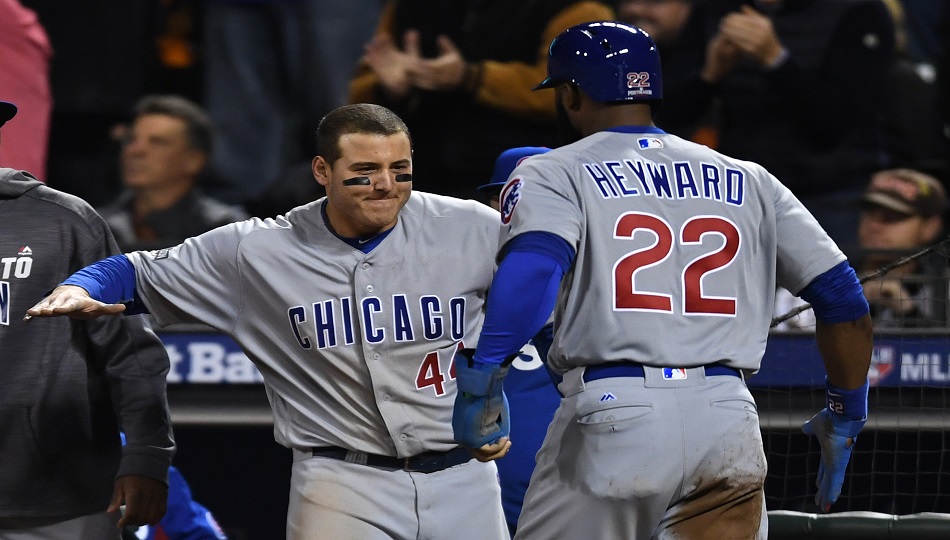There isn’t much left on the long road to a World Series title. Each of the four teams remaining are fully capable of taking it the distance — some, perhaps, more so than others. And by the time both League Championship Series match-ups conclude, these critical questions will be answered.
Cleveland Indians: Can their pitching suppress Toronto’s onslaught of power?
In accumulating 94 regular season victories, the Indians did it with nary a superstar on the roster — although Francisco Lindor can be considered a star in the making.
But the collection of Cleveland arms made it one of the best staffs in the American League. While Corey Kluber led starters in almost every notable pitching category, the Tribe filled out the rest of the rotation nicely with Josh Tomlin and Trevor Bauer, among others.
Pitching depth is imperative at this time of the year — which means the absence of Danny Salazar and Carlos Carrasco at the back end creates an unfavorable scenario for Terry Francona. In all likelihood, the Game 4 starter will be rookie Mike Clevinger — who hasn’t logged more than two innings since Sept. 22.
Should the Blue Jays offense be able to knock around any of the starters (which it easily can), the Indians are fortunate to have a security blanket in the bullpen. Andrew Miller, acquired at the trade deadline, showed his worth during the ALDS against Boston. After vocalizing his willingness to ago above and beyond what is normally expected of relievers these days, Miller
Over two frames, Miller allowed just one hit and fanned four while earning the victory. In Game 3, he tossed two more one-hit innings to hold Boston in check.
Toronto Blue Jays: Will the momentum generated by great hitting and pitching wear off?
If you had to do a power rankings on the most impressive teams of the postseason so far, the Jays would be perched at the top. In dramatically winning the wild card game and then sweeping the team with the AL’s best record, Toronto is averaging d 6.75 runs per game while belting ten homers — three of them off the bat of Edwin Encarnacion.
The pitching has been stellar both at the start — thanks to strong outings from Marcus Stroman and Marco Estrada — and at the finish — as five relievers (including closer Roberto Osuna) have combined for 12 innings and zero earned runs allowed.
As much as the four-day layoff will be a much-needed rest to those who aren’t 100 percent, especially Osuna, this delay could cool off a club that’s sizzling in multiple phases. It’ll be known early if the Jays accumulated any rust — and if the Indians can take advantage of it.
Chicago Cubs: Can the middle of the batting order regain its strength?
There’s no doubting the embarrassment of riches Joe Maddon has at his disposal.
The Cubs posses so much depth and diversity of talent that a power outage from the heart of the lineup never really becomes the center of focus. Over the first two games of the Division Series at Wrigley Field, Anthony Rizzo and Kris Bryant were held in check by San Francisco pitching. Bryant was 2-for-7 and Rizzo went 0-for-7.
This trend continued in the Bay Area, with the exception of Bryant’s dramatic ninth inning homer in Game 3. Rizzo continued to swoon, mustering just one hit. His lone contribution on offense was a walk that helped the amazing Game 4 rally.
In a quick, best-of-five series, a forgettable performance by a key asset can be masked if the supporting cast comes up big in crucial spots. But during a longer, best-of-seven set, it’s drawn into focus. Thanks to timely hitting, the struggles of Bryant (through the first two games) and Rizzo (for the entirety of the NLDS) became an afterthought. It won’t if they’re underwhelming in the NLCS.
Los Angeles Dodgers: How will the lineup fare against Chicago lefties?
Dave Roberts took an unconventional path in leading his team to baseball’s final four. L.A. won the NL West despite having a record number of players on the disabled list. In Thursday night’s Game 5, Roberts defied conventional baseball wisdom when he brought in closer Kenley Jansen to record seven outs and Clayton Kershaw to get the last two.
However, the greatest concern for Roberts will be about something he can’t control.
The Dodgers’ greatest vulnerability is a lack of success against left-handed pitching. In fact, their batting average against such arms during the regular season was an MLB-worst .215. And it just so happens that Jon Lester will get the ball for Game 1 (and at least one more start, if necessary).
But it doesn’t stop there. Travis Wood could be used in long relief, as could Mike Montgomery (a 1.69 ERA in 5.1 innings during the NLDS). Then there’s Aroldis Chapman for late-inning situations. For the Dodgers to reach its first Fall Classic since 1988, they’ll need to figure out the southpaws — not just rely on its own.
